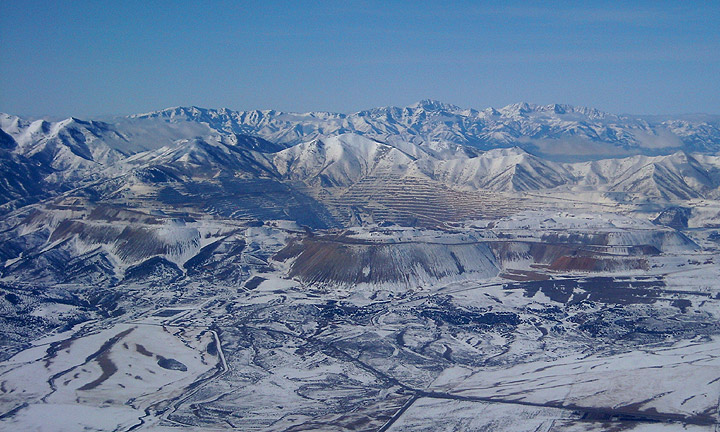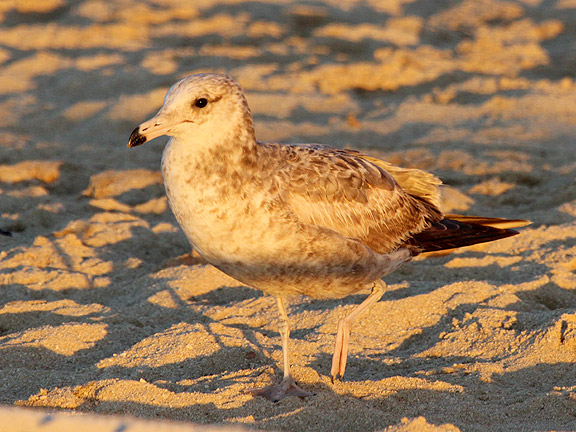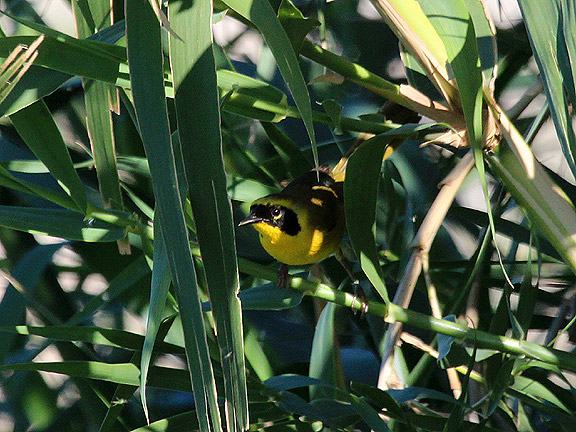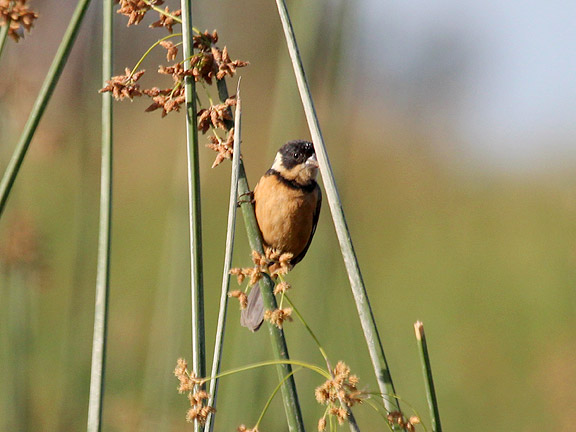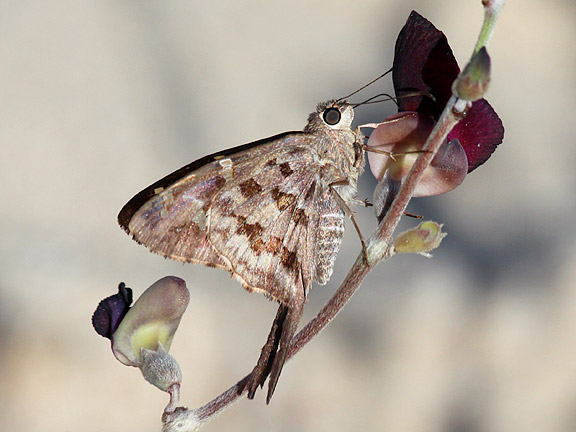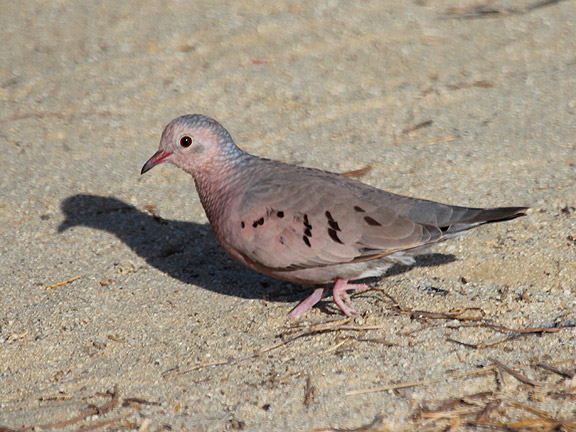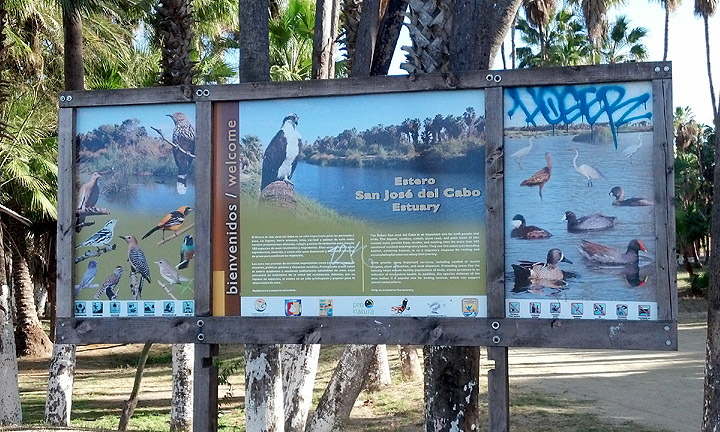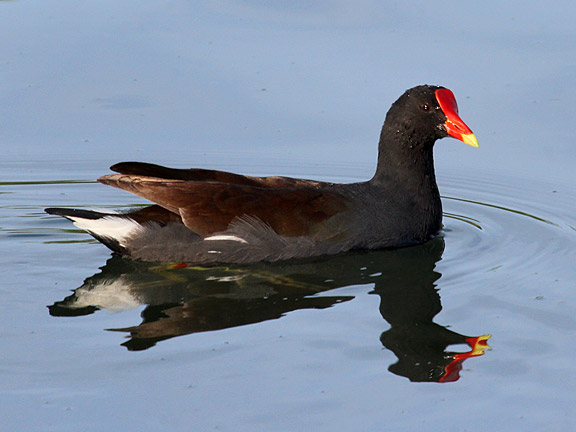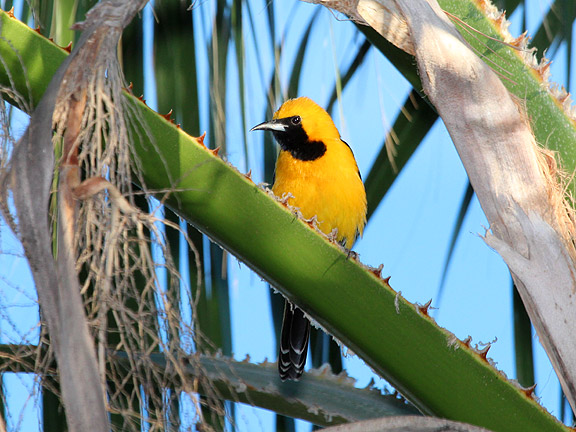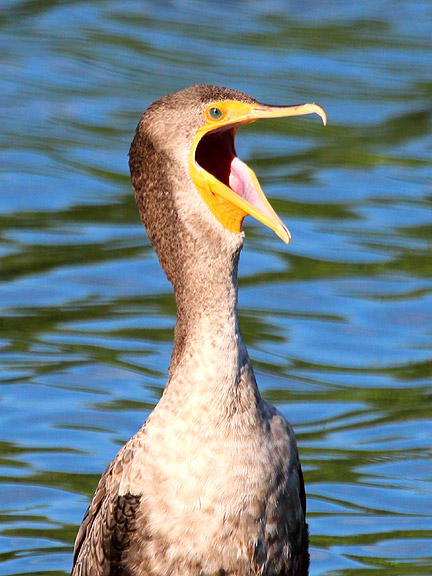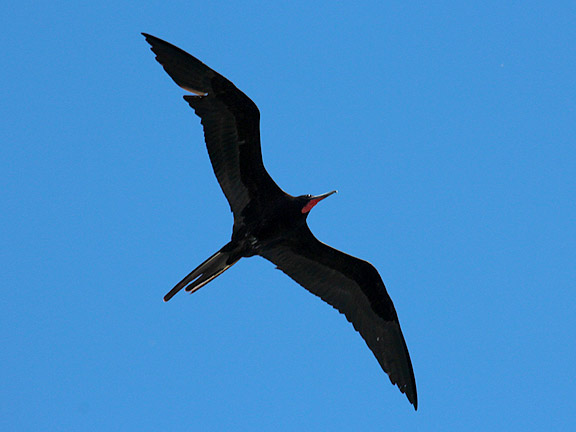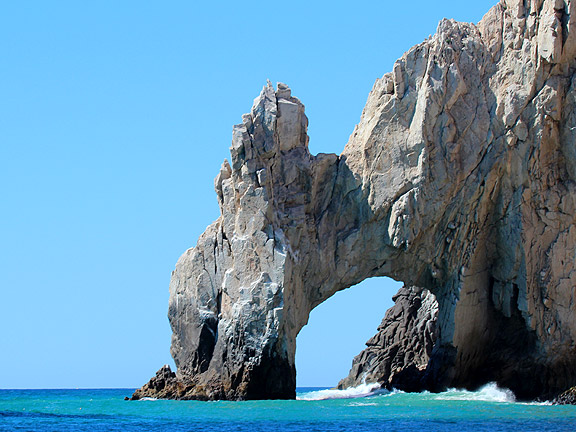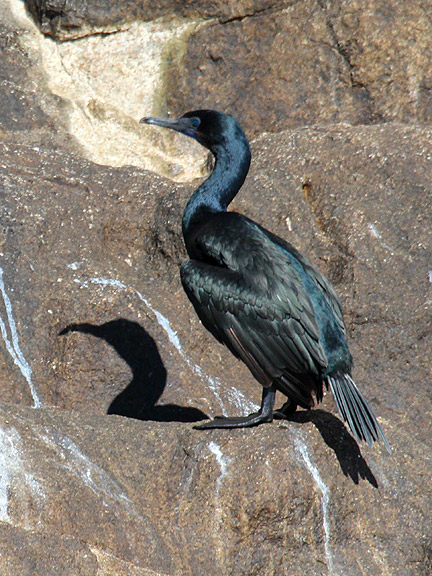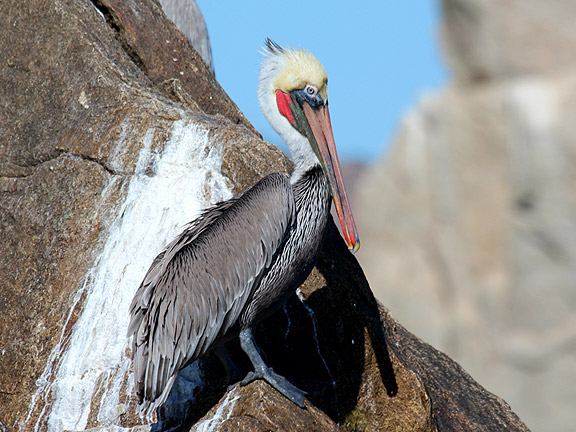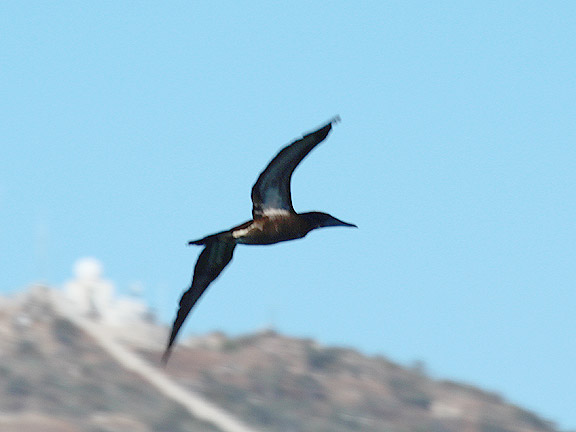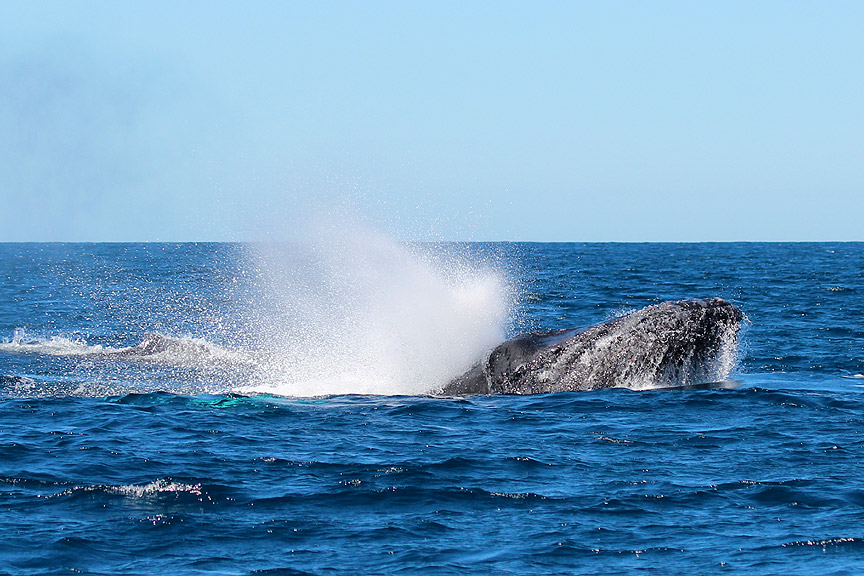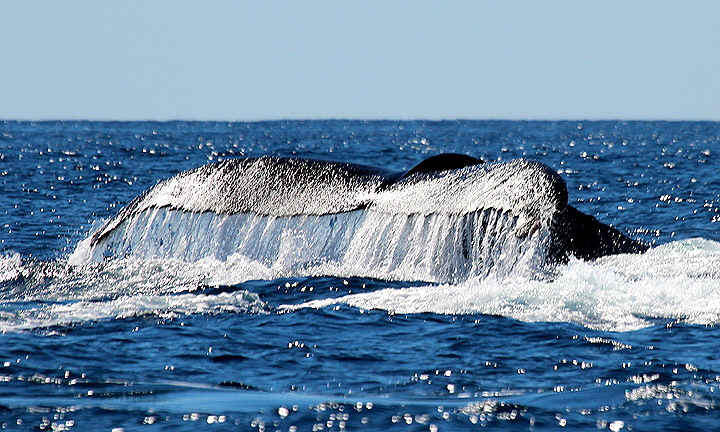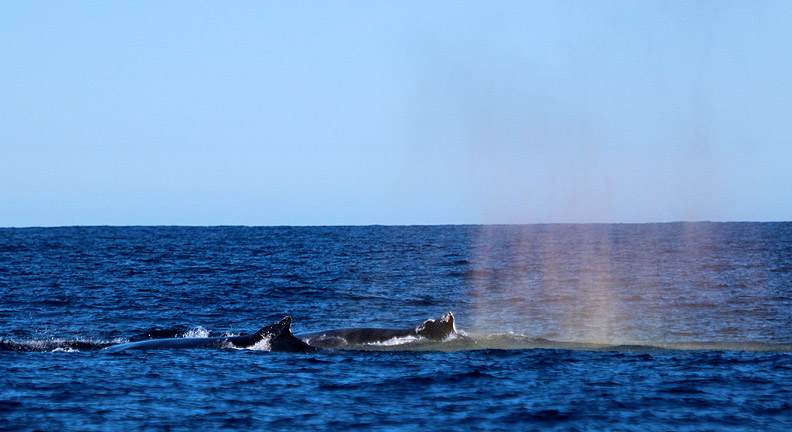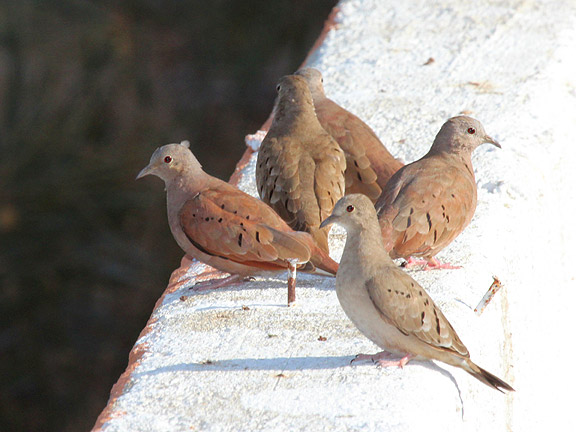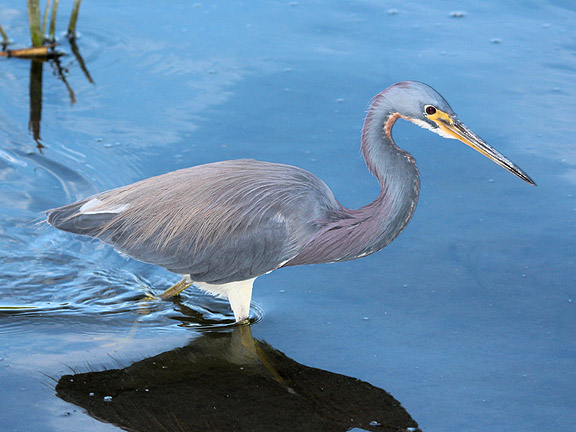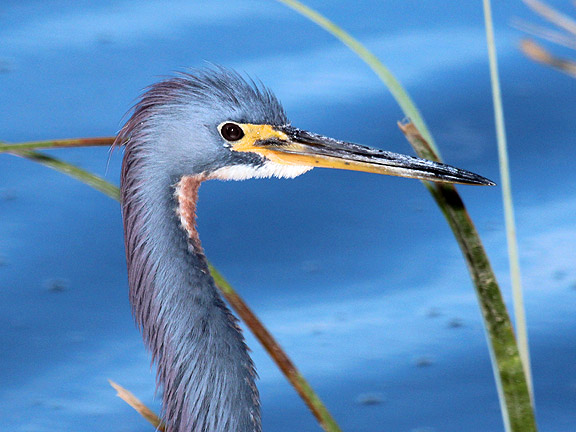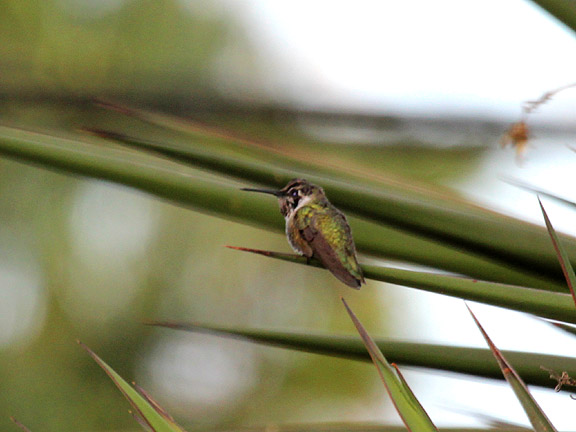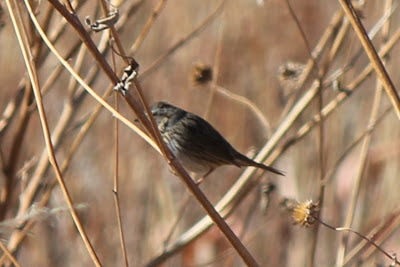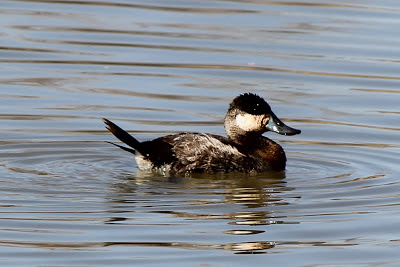The bird came out in the open for about a minute before disappearing back into the thick. My first lifer and endemic of the trip! There were few birds near the beach side in the middle of the day. Back at the beach we sat to watch the waves coming in. As I was watching the occasional Sting Ray jump and flutter before hitting the water again, I caught an awkward flapping a little ways out. I brought my camera up and exclaimed that it was a BOOBY! I have to watch that talk on the beach... I snapped a few shots and saw it hit the water in a dive--it was my lifer BLUE-FOOTED BOOBY. Two lifers in 15 minutes in a place where there were only 4 possible life birds to be had!
The following day, the 17th, was Sam's birthday so I hadn't planned on doing much birding. We spent the majority of the day at the beach just relaxing, but by mid-afternoon I had the itch to get out and walk. I took off to the estuary while my beautiful wife enjoyed the sun some more. I made my way down the beach and first checked the estuary on the beach side. Same birds as the day before, plus a few COMMON GALLINULES. As I pished to try and coax out the yellowthroats again, I caught a flash of black and white fly by. The birds landed in the cattails, and I soon found myself looking at a pair of chestnut-colored WHITE-COLLARED SEEDEATERS.
I also followed around the few butterflies I saw here--my even nerdier side came out when I spotted some kind of Hairstreak, and then an endemic, Dorantes Long-tailed Skipper.
I spent a couple hours here, just in awe of how cooperative the birds were. I lost track of time photographing everything and anything. A pair of DOUBLE-CRESTED CORMORANTS took up a good 30 minutes in awesome evening light.
Monday the 18th we had booked a Whale Watching trip out of Cabo. The driver picked us up after breakfast and we headed west to the marina. I both enjoyed and regretted the trip we took. It was awesome in the respect that we saw almost a dozen whales. But it was terrible in the fact that more than 20 of us were stuffed on a Zodiac, making it impossible to get comfortable, or setup for the shot you want. But in the end the # of whales really was awesome and they put on a show. On the way out a GREEN HERON flew across the marina. MAGNIFICENT FRIGATEBIRDS were a constant sight the entire boat ride.
Along the beach leading out to The Arch at Lands End in Cabo, I finally saw some different gulls. RING-BILLED, HERRING, and WESTERN GULL could all be seen from the boat.
Both Double-crested Cormorants and there sea faring cousins BRANDT'S CORMORANT were seen up close.
And the BROWN PELICANS were abundant here, on every dock, rock, boat, and post.
Once we found the whales, it was 2 hours of great views--I had hoped for a full breach, but only got a few head breaches. It wasn't till we were almost ready to head back that I actually got a good breach shot of a HUMPBACK WHALE.
Most of the pictures I took were tail shots, which are pretty cool in their own right.
And every once in a while when the whales spouted, the mist appeared as a rainbow.
We headed back in and had lunch in Cabo before catching a ride back to San Jose. We immediately went to the beach where I hung out until 3:30 before deciding to head back down to the estuary. Sam stayed to enjoy the sun again. This time I hoofed it down the street to save time. Between the Grand Mayan and the Holiday Inn there is a lot used to corral horses. There is one big brush pile right near the road that I thought looked good for a thrasher, so I whipped out my phone and played Gray Thrasher. I hadn't even gotten through 3 notes when out of the middle of the pile, an endemic GRAY THRASHER bolted to an open fence post.
My 3rd lifer of the trip, and the 2nd of 3 endemics. After taking photos for a couple minutes I started to walk, and only got 15 feet before the ground started exploding in front of me. Ground-Doves were everywhere. After flushing a few more I finally spotted a couple RUDDY GROUND-DOVES off on a wall by themselves.
I headed inland along the trail, eventually I came across a gorgeous TRICOLORED HERON that I just watched from 5 to 10 feet away for a good 15 minutes. I had seen this species in the U.S. and Costa Rica, but never so close.
The HOODED ORIOLE were as cooperative as the previous day. I came across a small flock of WHITE-CROWNED SPARROWS that would soon be headed back north. The same with the MACGILLIVRAY's, ORANGE-CROWNED, and YELLOW-RUMPED WARBLER. I stopped to sit and admire the calm water in the canal along the west edge of the estuary, and watched a scaup get closer and closer. Pretty soon it was right in front of me, and was about the closest I've ever been to a GREATER SCAUP.
I didn't think too much of it, but I guess this is a rarity here, so that was nice. I shot some video before heading further inland and coming to an opening into a marsh. Here the birds were thick. The trees on the far edge of the water were filled with CASSIN'S and TROPICAL KINGBIRDS, and HOODED ORIOLES. As I watched another TRICOLORED HERON came right in and landed in front of me. I obliged it and took a bunch of photos of the very close bird.
I finally headed back still missing the last endemic of Baja--the Xantus's Hummingbird. I figured I needed to go to where the flowers were, so figured I would walk the streets of San Jose the next morning and see what I turn up.
On Tuesday the 19th we were heading back to Salt Lake. I got up to go watch the last sunrise. It was a pink one and the best of the days we were there.
Afterwards I headed off toward the estuary, figuring I would just walk the streets with lots of flowers to see what I could find. I took the last major street paralleling the estuary and followed it inland. The wind was blowing, but I was determined. All the birds I had become used to seeing an hearing were present. After a while I finally I spotted a flyover hummingbird that was back lit. Was it a Costa's or Xantus's? Damn! I had my camera in its bag since I was walking down a city street. AS I approached a bus stop with about 20 people waiting, I looked to the vacant lot behind the bus stop. There, not 10 feet from the road, at eye level, on wire, was a gorgeous XANTUS'S HUMMINGBIRD.
I stopped midstep and just stared at the bird. What do I do? Should I grab my camera and try to get a picture, or just enjoy the moment. I was nervous grabbing my DSLR out near so many people. I opted to leave it in the bag, and after watching the bird for about 15 more seconds, it flew off and out of sight. I thought it was a good sign though and I would surely see more!
I was surely wrong. I spent another hour wandering the streets along the estuary, and did see two more hummingbirds--both were COSTA'S HUMMINGBIRDS, a bird I saw a week later in southern Utah!
Labels: Cabo, endemics, life birds, listing, Mexico, ocean, Travel, trip reports
